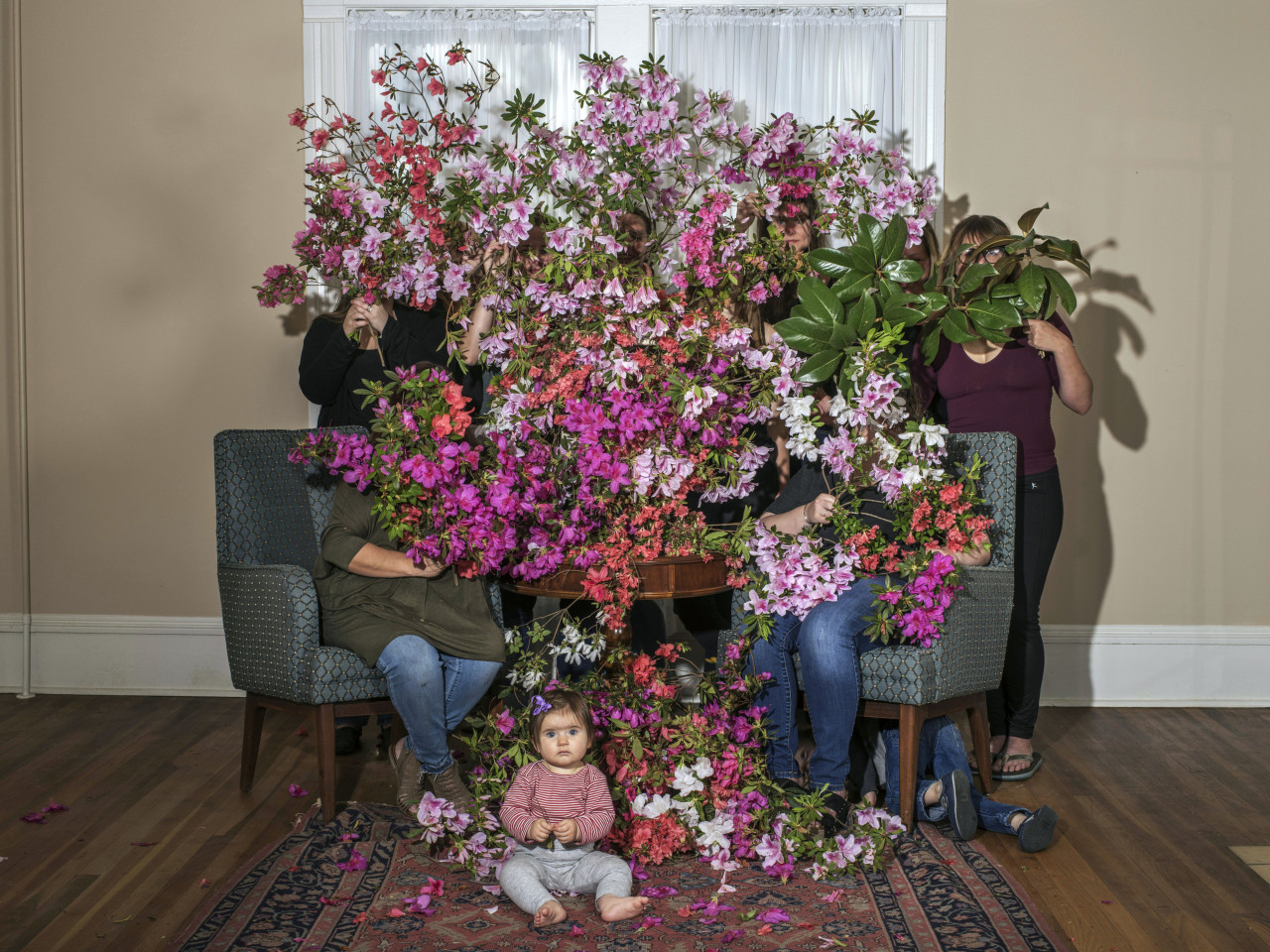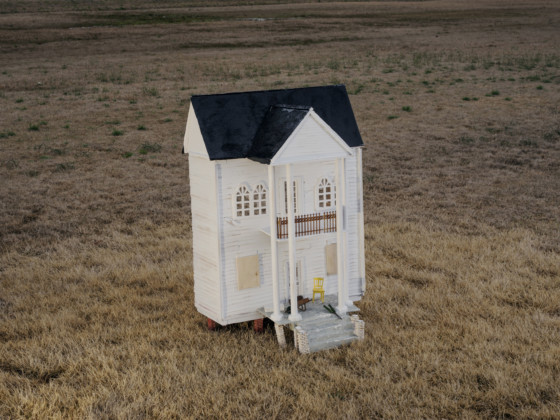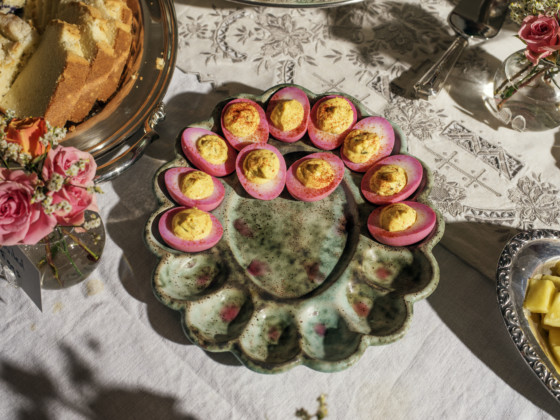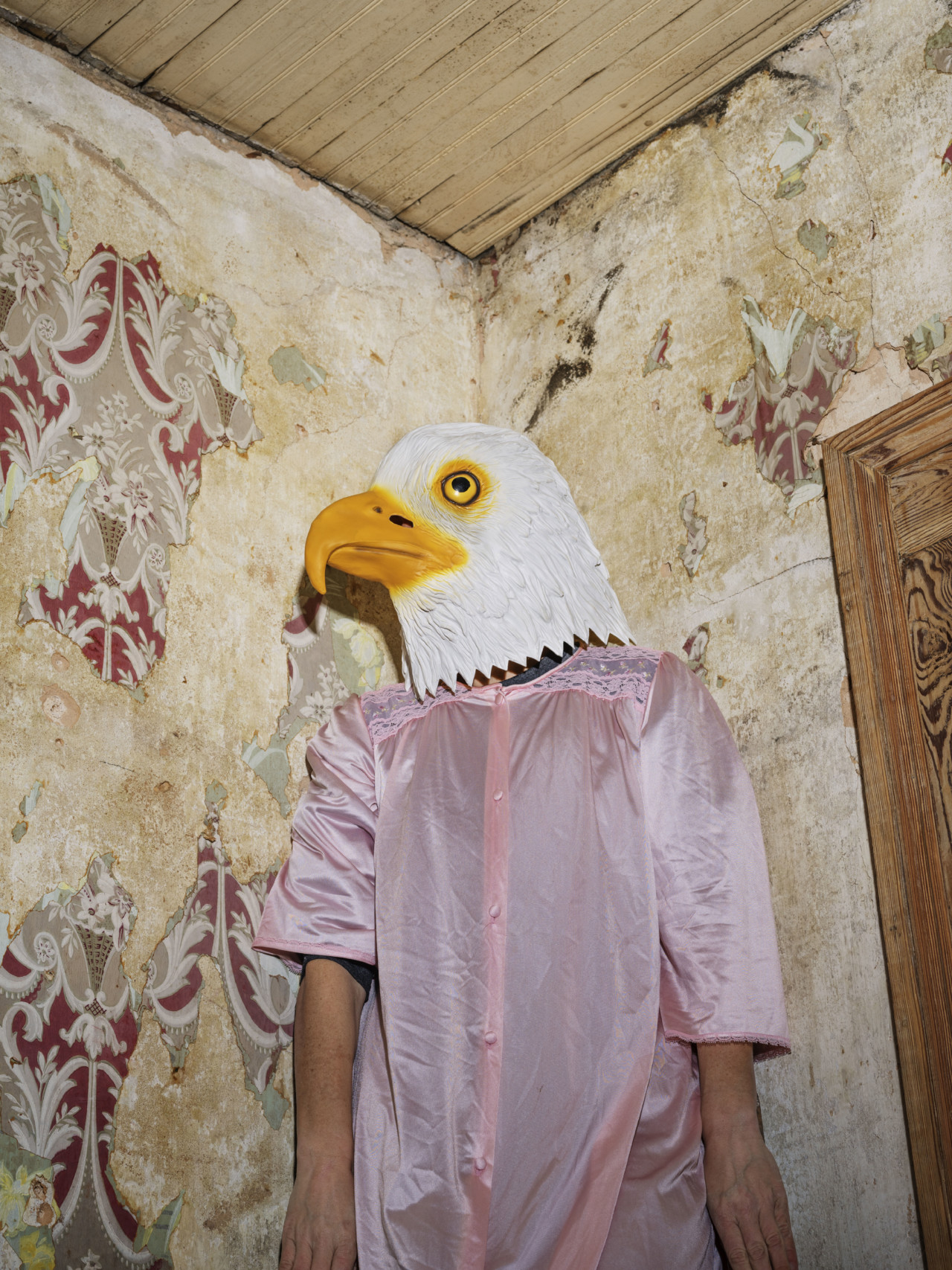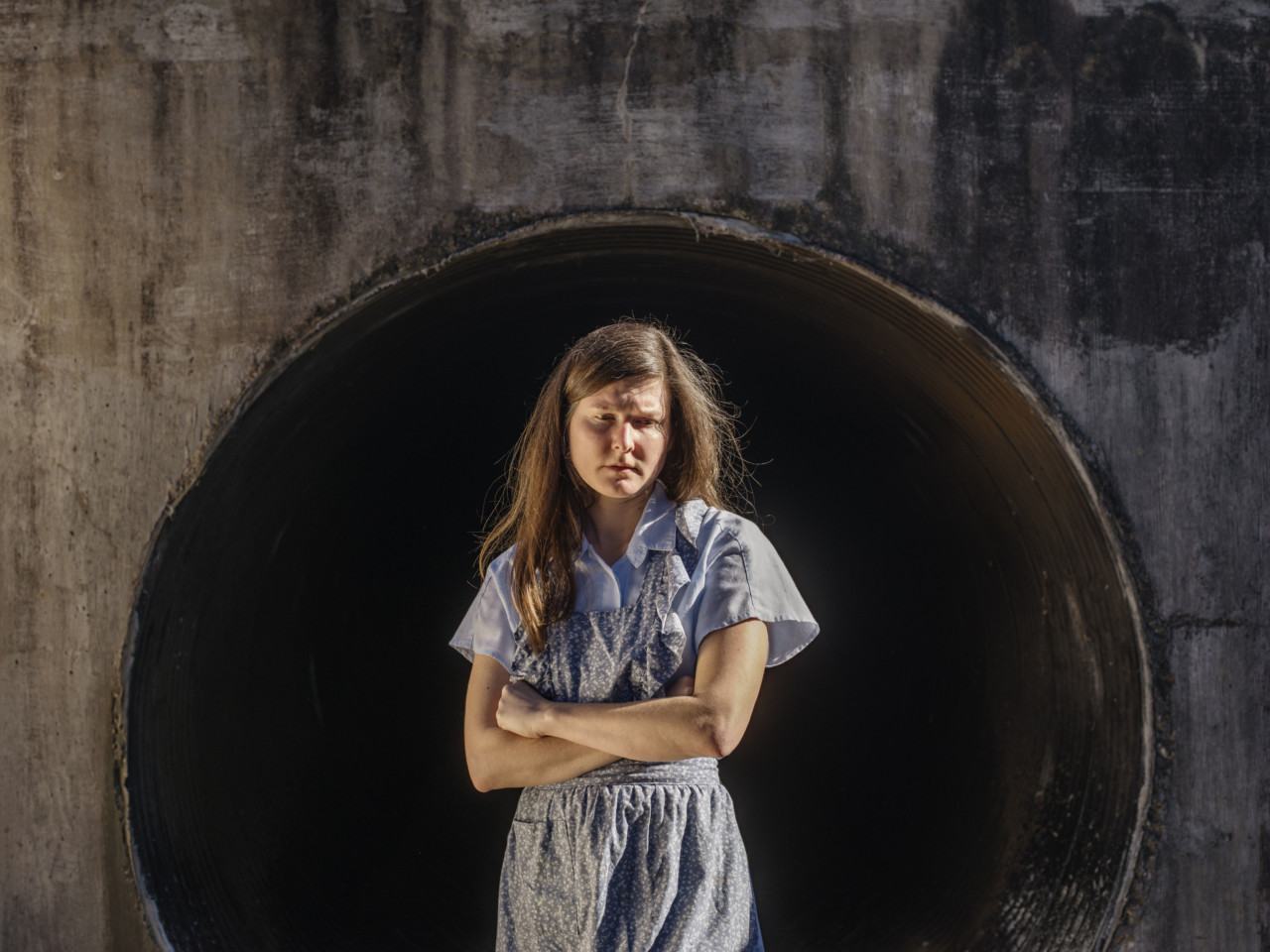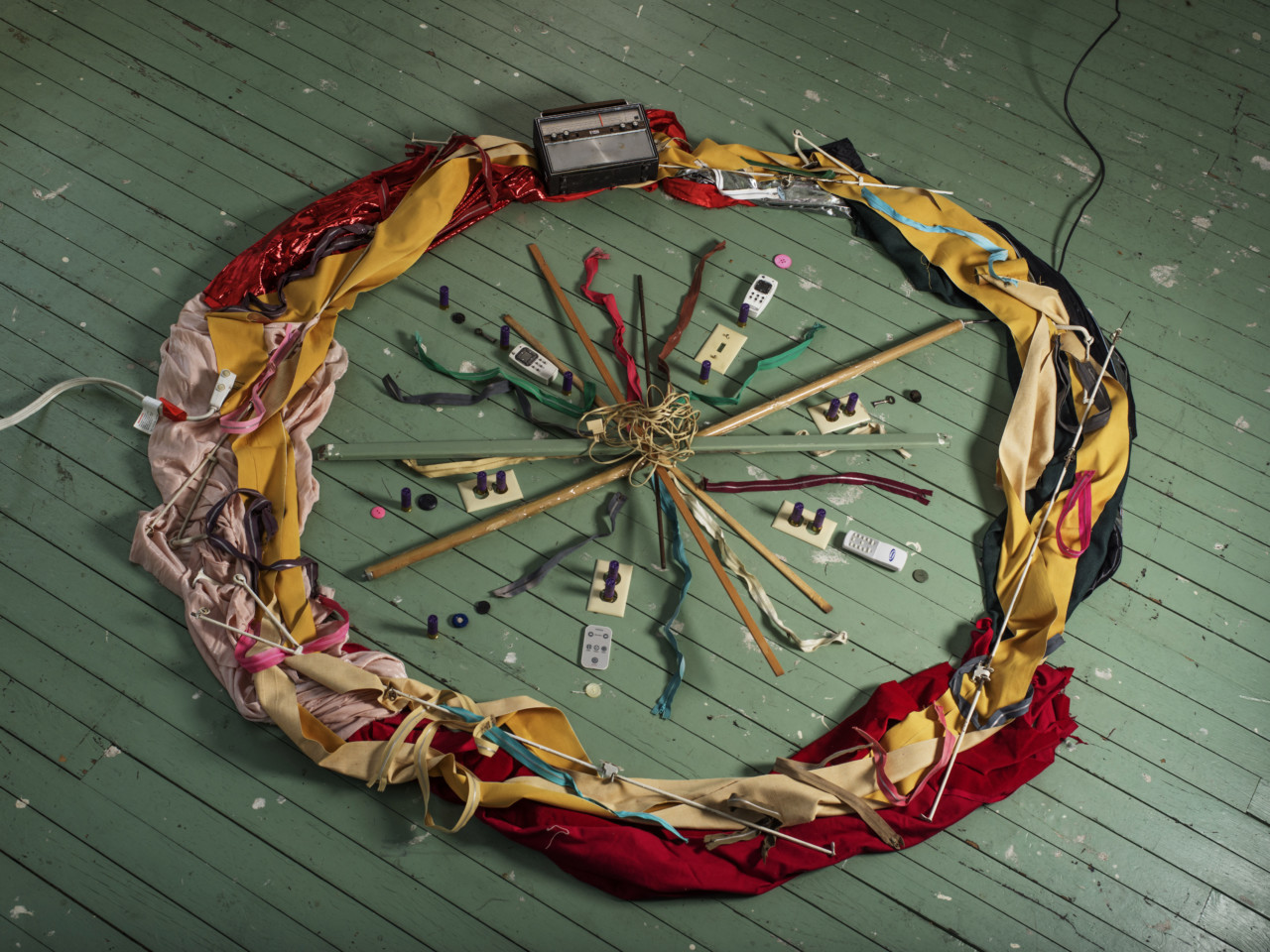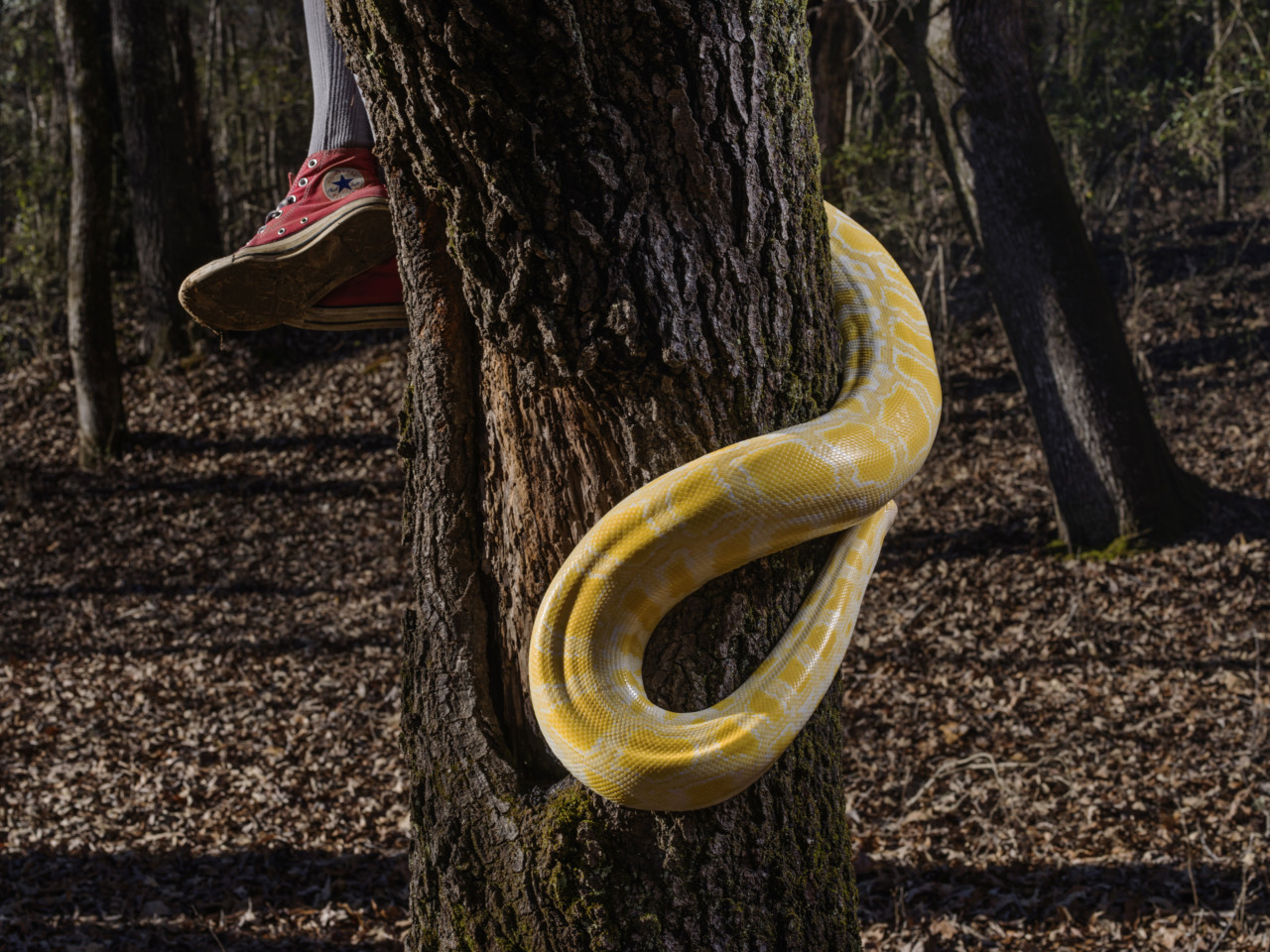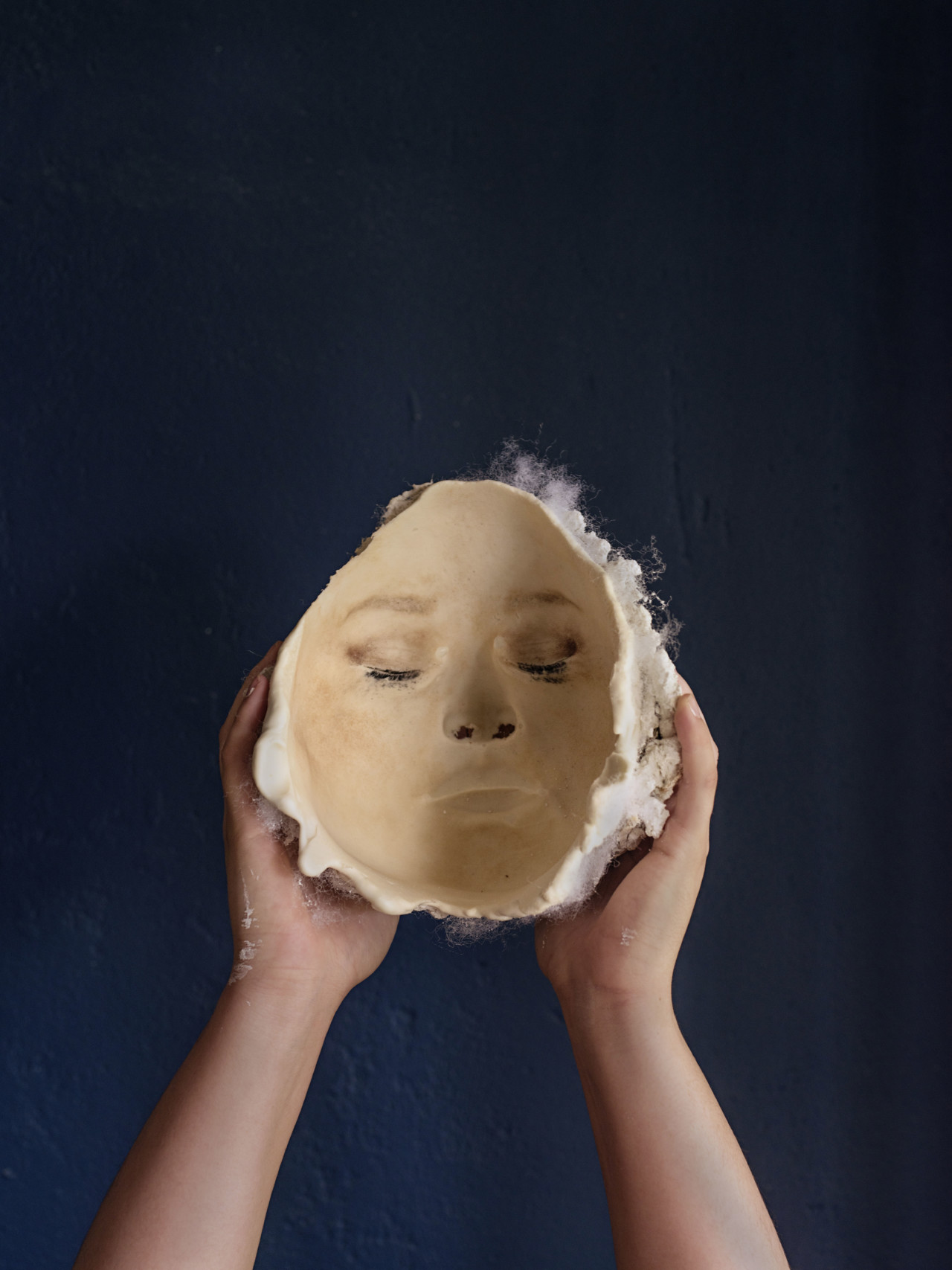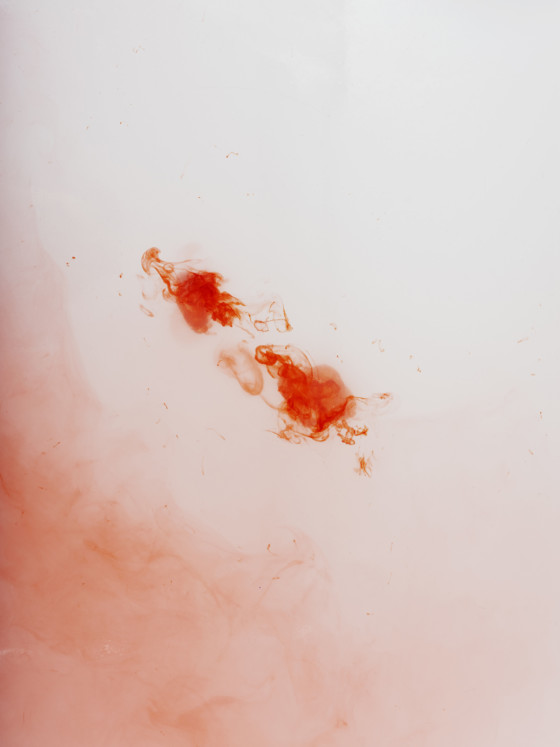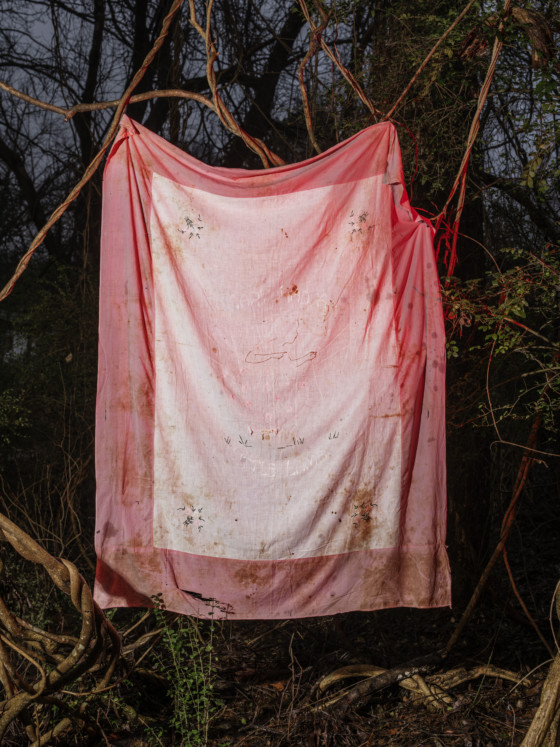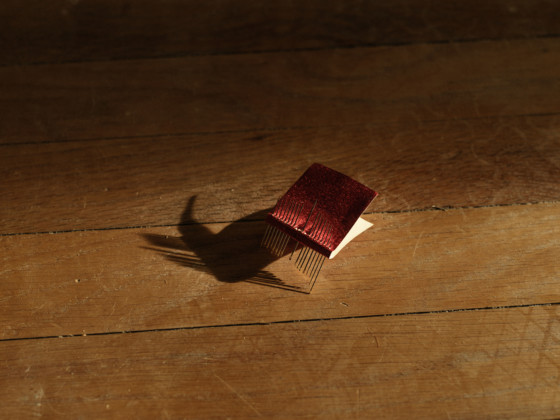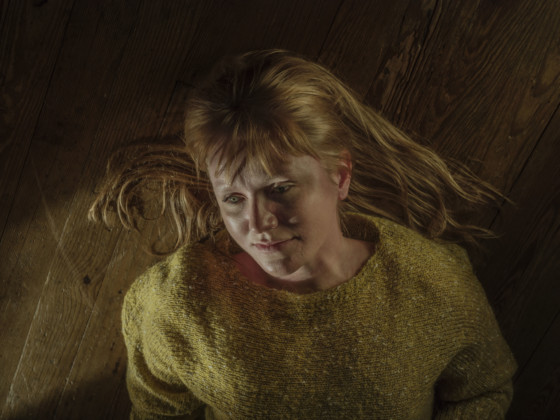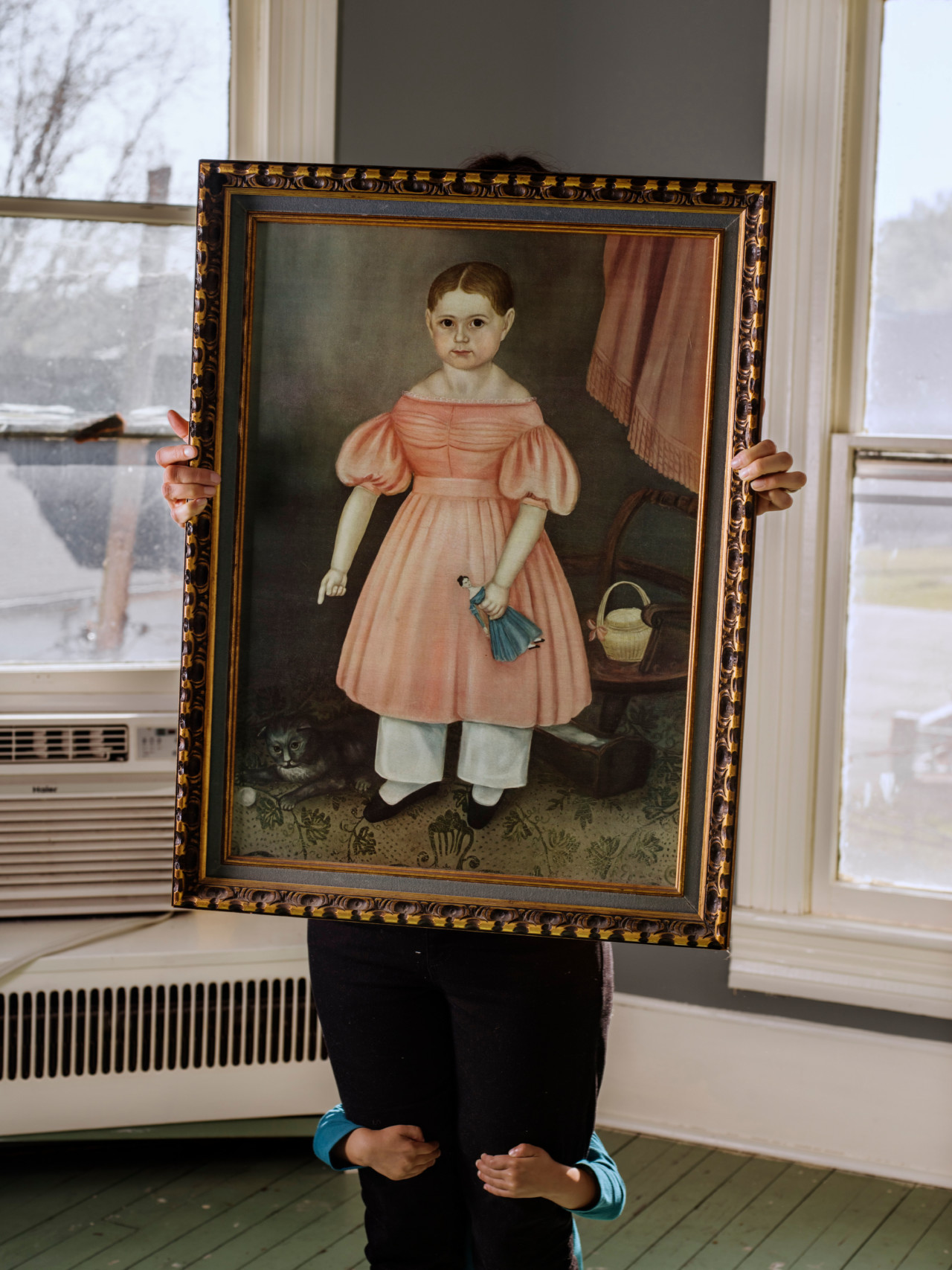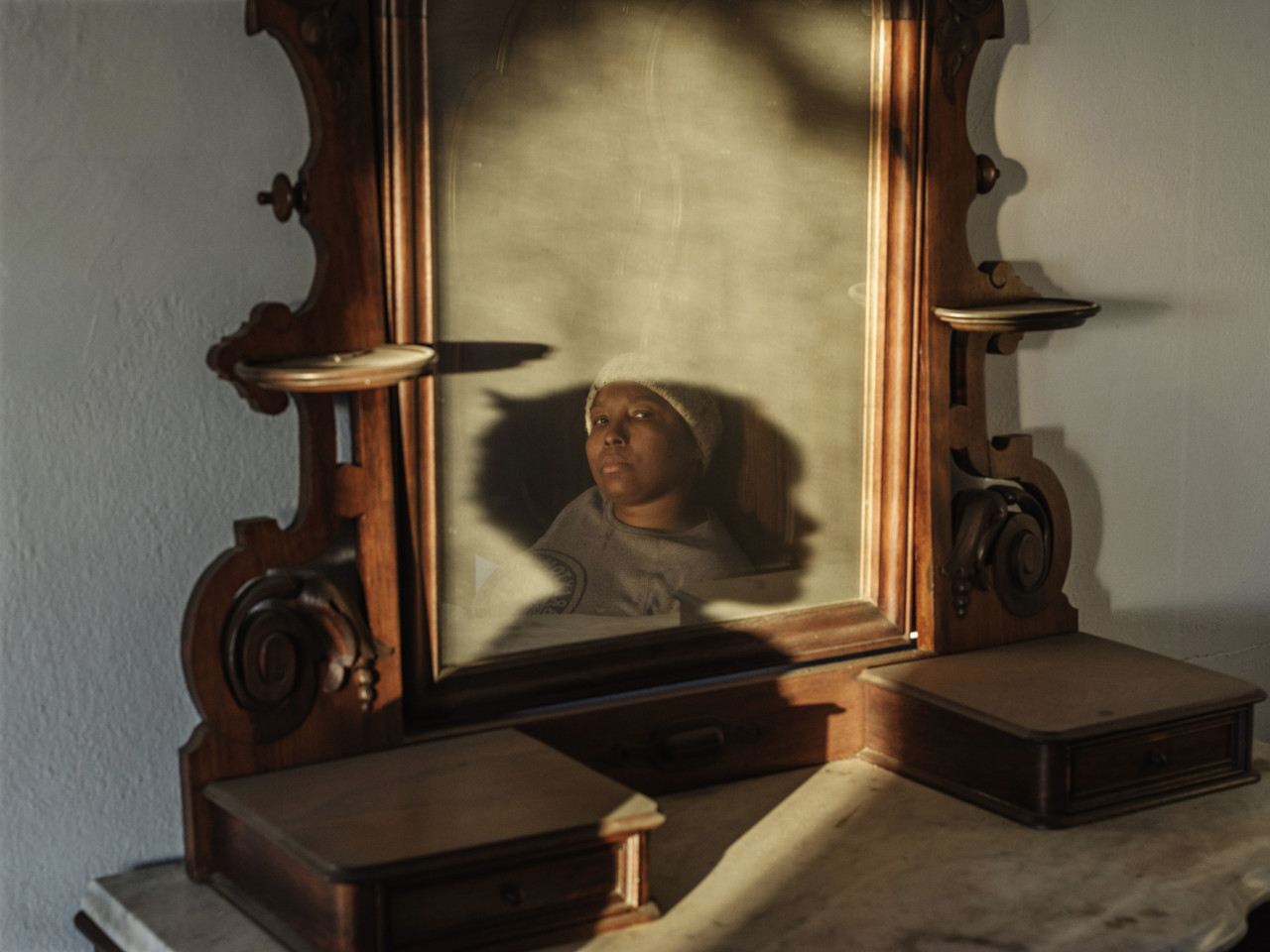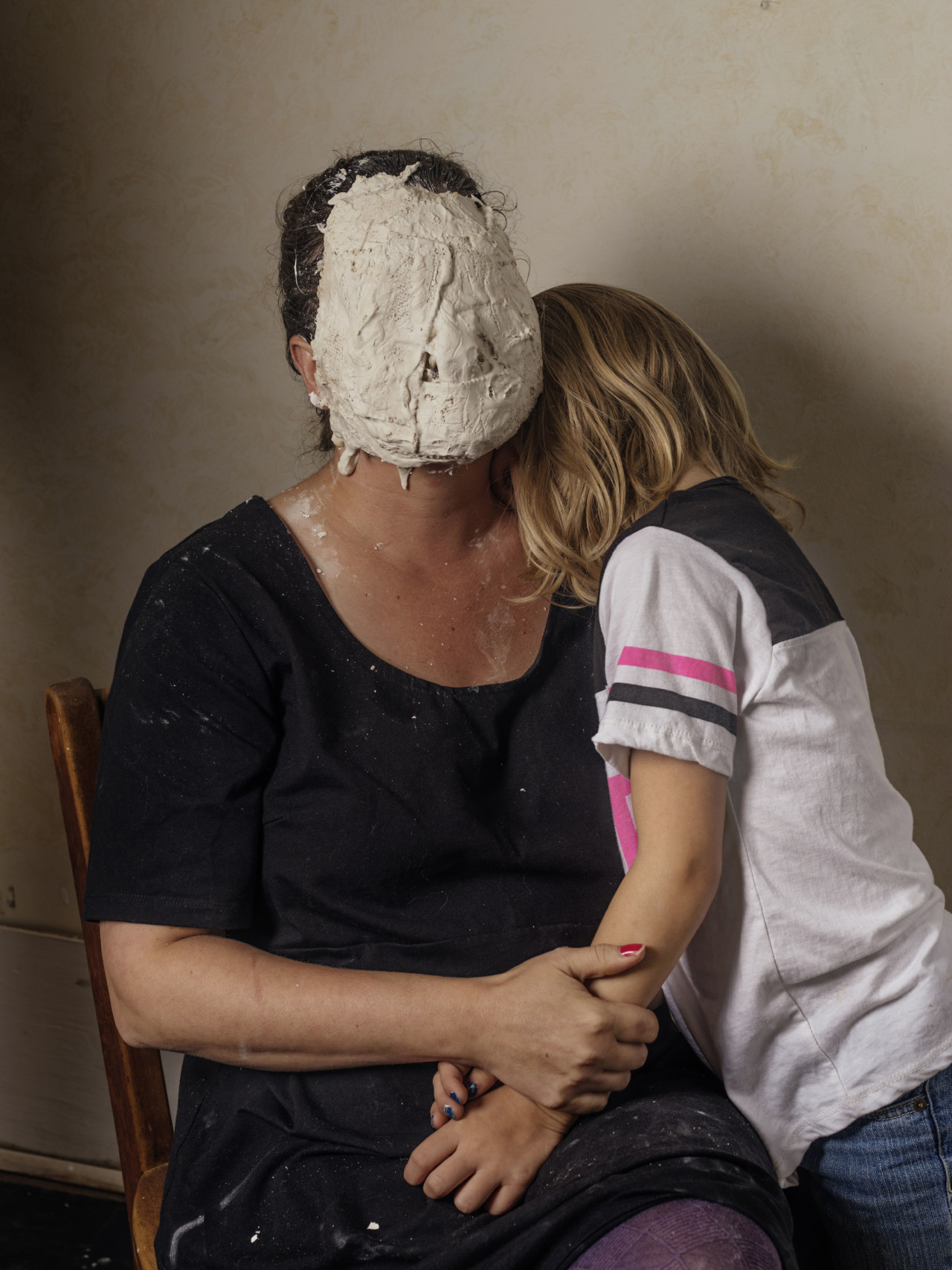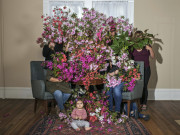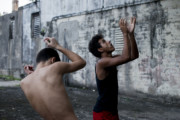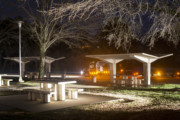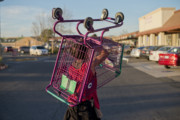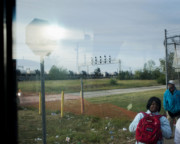Knit Club
A first look at Carolyn Drake's forthcoming book project, a Faulkner-tinged collaboration with the women of one small Mississippi town
From Oxford, Water Valley is eighteen miles southwest. It didn’t make it onto Faulkner’s imaginary map. It was Choctaw and Chickasaw land and then it was a railroad town and then it was burned by Grant’s men and then it became a railroad town again. Eventually the railroad left too. Starting in the early 1900s heavy floods began to wash over the town about every five years. Downtown stores built flood walls to protect their back entrances.
One day years ago as the waters rose, a woman was seen strolling up the sidewalk and walked right off into the storm drain, disappearing completely from sight. But as she went down, her purse went up. It never did get a drop of water in it, people said. She came up spitting sticks and leaves, but her purse was still dry. The people who saw her never forgot it.
Knit Club will be published in spring, 2020, by TBW Books. The project was made with the support of The Do Good Fund. Text by Rebecca Bengal.
Carolyn: I came to Water Valley because the house I wanted to rent in Memphis had fallen through and another place appeared, one state away. It didn’t sound that hard to drive 90 miles on country roads to get back to the airport.
It was too far for me to be able to find work, though, so I left. But I kept making reasons to come back. The next time I came was to work with Coulter. All day long I sat sewing with a couple of women, the needles pricking our fingers through the rugs, listening to a true crime podcast.
One night I left and rode around the county with the police deputy. All of a sudden we were chasing someone who was fleeing Memphis and the nose of the car went sideways into the highway to stop him. In the morning they brought us to the station to sign a paper saying what we had witnessed happen was not what had happened. I decided I had seen enough of the men in this town for a while.
Katherine: People go to school in Oxford or they work there, but they come to Water Valley because of the houses. I knew I wanted to live here because there’s amazing turn-of-the-century Gothic Revival Victorians and you can fix them up cheap. I was always waiting for the right guy to do it with, and then I got pregnant and I just decided to do it on my own.
Coulter: Growing up in Columbus, Georgia, the main house I lived in had belonged to Carson McCullers’ best friend Helen Harvey. Carson was a gifted piano player, and she would come over and play Helen’s piano in what became our living room. There’s a picture of Carson on Helen’s pony, I think it’s in front of the house too. At one point the house had been converted into a store so there were iron bars on the windows and the entire front yard was paved with gravel and my friends called it the driveyard. I’ve never lived anywhere but Georgia and Mississippi.
Monica: When Coulter told me about growing up the daughter of artists and at one point living in a trailer, I couldn’t understand it. I grew up in Mexico City. We had money, we had maids and butlers, I never lifted a finger. My father always said he didn’t raise his daughters to work. But I wanted to learn English, and so my parents let me come here as an exchange student. At first in Water Valley I was the only Hispanic person in the whole town. If I blinked twice, everybody would know. As soon as I got off the plane everybody said how y’all doing. I didn’t know what they were talking about. The English I had learned was English from England. I had a headache, and I had to get a dictionary out so I could tell them.
I lived with my host family ,the Turnages, for ten months and then I went back to Mexico City. The guy who used to be my host brother had lived by himself, he was thirteen years older than me. He came to Mexico and asked me to marry him, and we’ve been together twenty-eight years. We moved away and then we came back to run the pharmacy that’s been in his family since 1905. I work there too. I tell everyone I’m the drug dealer in town.
Adrienne: After we moved here, I went back to St. Louis—my family had fought to save the three-story historic landmark brick house that my grandfather built from eminent domain. It was saved but moved: the whole house lifted off its foundation and slowly wheeled for two-thirds of a mile. We all walked alongside it, a processional down an eight-lane road. It was on national news. It was such a strange feeling, watching your family, your entire history, your whole rootedness, passing through the streets.
Claire: It was because of Faulkner. It was As I Lay Dying that did it. It was Addie Bundren that did it. I think that chapter is the best eight pages of modern American literature. A lot of critics say he hated women. I think that’s a little easy to say, maybe too easy, even though I have less forgiveness for him now than I did a few years ago. I wrote essentially that he didn’t hate women, they were mysteries to him and that’s why he wrote about them—to try to figure them out—but he didn’t actually ever do it. He didn’t figure them out. I came here to write about Faulkner’s women, and I stayed.
Adrienne: I’ve never read him. Never had the inclination.
Natalie: My ex attributes our divorce to moving to Water Valley and he’s absolutely right.
I started coming to knit club and I found my voice again. I would see the reflection of what that sounded like in someone else’s face.
Carolyn: The two old jails are right next to where the giant underground drainpipe meets daylight, which is where I photographed Katherine in a blue dress. I was afraid we’d find a cottonmouth inside but it was empty except for a trickle of water. Across from the drain is a grocery store that brought the town back to life. If you go there for lunch you can hear the stories people are telling and you probably know who they’re talking about. Or, at least you think you do.
Katherine: Knit club started because Coulter put it in her newspaper column: Come to my studio and I’ll teach you how to knit. But then we just started hanging out on my porch every Tuesday and it’s been that way for years.
Coulter: The first thing to know about it is that nobody knits. I mean pretty much everyone knows how to knit, but if anyone is knitting, that person is probably pregnant and needs something to do with her hands ’cause she can’t drink.
Katherine: I live right in the middle of town, so everybody sees us sitting out here. People drive by. A couple of my friends’ ex-husbands, they just hate it. They’re like, these chicks are up to no good. Maybe they’re right.
Coulter: I really don’t know what other people say about it. I’m too on the inside myself.
Natalie: Everyone brings their kids but they aren’t allowed on the porch. They’re running around in the yard with all their friends.
Monica: I’m the only one whose kids are grown up. I’ll bring my daughter, Karen, she’s got more in common with some of the other women than I do. You know, I still like to go to bars and dance on tables and whatever, and my daughter she’s like, no.
Karen: She told me that they started getting together to hang out and learn to knit which I thought was odd for my mom.
Claire: There are people in town who call it a coven. That’s what I hear anyway.
Lauren: Anyone’s invited. We’re right there, in the middle of town. Sometimes someone new will show up. Not often but it happens.
Carolyn: Sometimes I wish I had kids, but it’s a little too late. It’s kind of hard to imagine that happens, but it does. I see myself watching as people around me have kids, and the kids get older and older, or have grandkids coming over to play, and you wonder what kind of person you are, not really having a life in some ways. But if it wasn’t for photography and the freedom of not being a mother, I never would have ended up in Water Valley. When I’m sitting around with them on the porch with my IPA, they let me live for a bit with the fantasy that I am a mother too, that my kids are running around with theirs and then we will go home to our big old house and fall asleep together.
Claire: We’ll sit on Katherine’s porch, looking at the house across the way. I know some people in town call it the Boo Radley house. I always call it the Compson house because it reminds me of The Sound and the Fury—a house that’s sort of in its glory but deteriorating. I think of it as the later time period of the book when the whole family has gone to shit, basically. Caddy’s gone and Quentin’s gone and Jason’s terrible. Someone’s bought that house now. Someone’s trying to fix it up.
One night we all brought shovels. One night I drive up and the sky is blue dusk and Katherine’s legs are out the upstairs window. It wasn’t the way someone would jump, or even fall; it was almost as if she had flown in. Her shoes were still on her feet.
Lauren: She asked me to hold on to her legs and I did, maybe for ten or fifteen minutes. I grew up doing gymnastics. I’ve been spotting people my whole life. I was fine. I wasn’t the one dangling out the window.
Katherine: I was fine too. It was peaceful actually. A kind of limbo. I don’t know what got into me, something about those giant old windows. I just wanted to see what it felt like for a minute.
Coulter: It’s like all paths led me here but I didn’t know it. I thought I was going to be a painter. I didn’t make my first quilt until I had my first kid. That traditional style, I have such respect for it. The whole history of women sewing and weaving together, I have such respect for it. But when I was growing up it’s why I didn’t want to do it. I didn’t want to sew because sewing was girly and I wanted to be outside. But I learned to sew from my mother who learned to sew from her mother who learned to sew from her mother who learned to sew from hers.
Lauren: When the other grandkids were asking for dolls, I begged for quilts. I’m a potter. I can’t quilt, I cannot knit, I cannot sew—if it involves thread, I cannot do it. But I have a stack of my grandmother’s quilts. There was no knit club for her. She had five kids to raise. She did her quilting on her own.
Natalie: In the winter, after some of us will go to my attic and huddle up there and smoke out the window. It’s awful, but we do. I needed that night, just one night a week, to sit and listen to someone else talk. We’ll go for hours and hours.
Claire: One night everyone brought laptops. We had them out in the dark, watching the news come in. It was a sobering night. It was a really weird night. Everyone just started dropping like flies. Suddenly no one could say anything. One by one they all left the porch. It was just like, I gotta go home.
Coulter: You know everyone’s got some drama on the outside. But some of us are single mothers and a week could go by and no one asks you how your day was.
Adrienne: I lived in a one-room apartment on the side of a mountain in the Caribbean. I liked kids, but I never once thought about myself mothering anyone until the plus sign came on the pregnancy test. I had always painted. If I’m not painting, things are not good. With the first two I had more energy. I painted all night and woke up and took care of them all over again.
Katherine: My grandmother was the bar everything was set to. I barely knew her but she was the end-all, be-all: funny, classy, genteel, traveled all over. But growing up all my friends were dudes. It wasn’t till when I waited tables that I kind of got matriculated in a sisterhood. And then this.
Natalie: There were six of us crammed in a booth. They knew what I was going to do before I knew I was going to do it. But they let me tell it first. And they let me ask them. And then everyone just stopped and looked at me. Like, did you hear what you just said?
Claire: They told me, come over; they said, you’ll be around women, you’ll feel better. And he’s not worried that we’re sharing our deepest, darkest secrets ’cause he knows we do.
Natalie: There were things I would have pushed under the rug and been able to hide if I didn’t have someone humanly interested in my life. When you have people who see what you go through, who go through it right with you, there can be a silence that’s understood. Sometimes you don’t have to say a word because they already know. And sometimes they see it before you do.
Karen: Since I was a daughter I didn’t want them to think they had to act or talk differently when I came around. My dream future life resembles one they have made.
Monica: I wasn’t a sad child. I was a wild child. I was a troublemaker. And I don’t know why, but I always thought I would die young. I remember thinking that always. I remember not too long ago someone asked me about what I’d accomplished in my life and I said, I have two kids, they’re not in jail, they’re not pregnant, they finished high school and college and they’re going on to do good things and I thought, honestly I could die at any moment and I would be fine.
Adrienne: I latched onto my grandfather as a child; he drew portraits, and I hung out with him in his garage studio all day. When he was in his sixties he went back to school and took astronomy and graphic design classes. He wrote this giant book, By Ageless Design, hand-lettered, illustrated with his paintings. He never published it but he was constantly revising it. It was his theory on evolution, birth, death, and the rebirth of the universe: how there’s no beginning or end. Like he says the way humans live on earth, the universe does the same thing. They go through the same cycles.
Coulter: I saw my mother quilt and I knew myself well enough and I thought I will never be able to do that, there’s no way I’ll ever be able to match corners or all the classic, traditional work she does. But then I got older and I realized it didn’t matter. Not being able to match corners has led me in other directions. All these pieces I’ve been gathering my whole life without ever realizing, all these things I never noticed I was doing all along were leading me here.
Claire: To me his women have more agency than they appear to. It’s basically everything Addie Bundren says in her chapter but especially, this may look like what happened to me but I was aware of what was happening. Not all of Faulkner’s women were like that, but Addie was like, Oh, I knew what was going on. This is how I survived in a man’s world.


